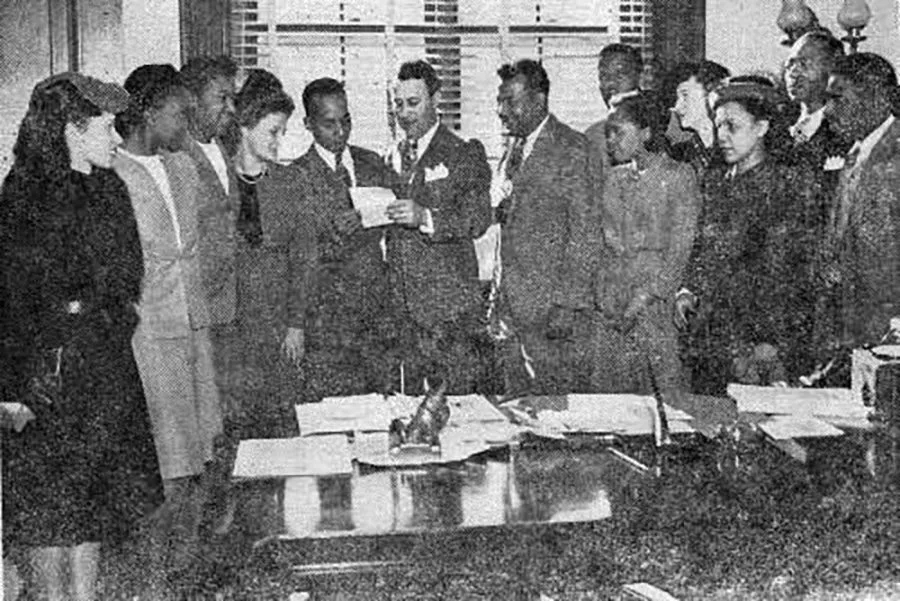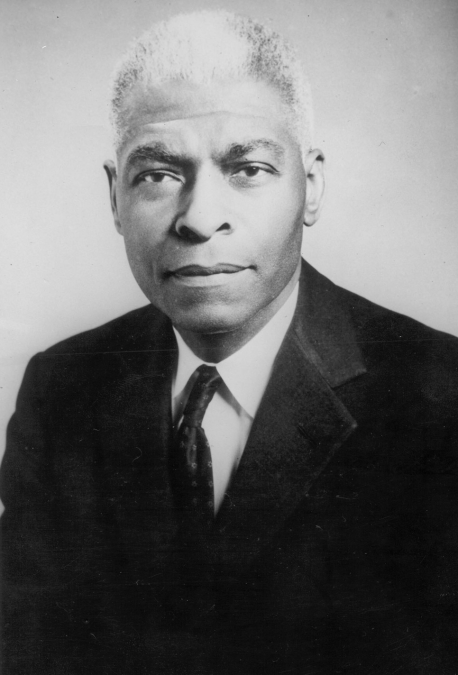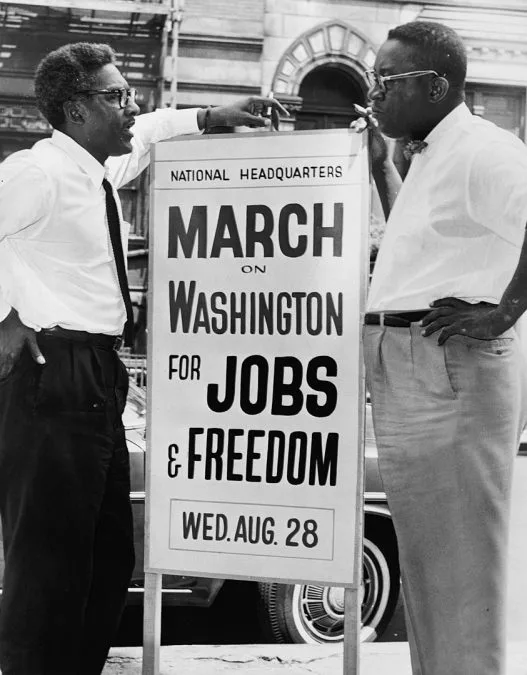The Civil Rights Movement Was Filled to the Brim With Leftists
Today is the 60th anniversary of the March on Washington. Ignore the lies and distortions — the reality, as the latest research shows, is that scores of socialists influenced or were themselves key figures in the civil rights movement.

Martin Luther King Jr and Coretta Scott King lead a voting rights march from Selma to Montgomery, Alabama, in March 1965. (William Lovelace / Daily Express / Hulton Archive / Getty Images)
- Interview by
- Shawn Gude
“The [thing] nobody wants to say . . . or doesn’t know to say,” said Rev. Wyatt Tee Walker, an executive director of the Southern Christian Leadership Conference (SCLC) in the mid-1960s, “is that the people around [Martin Luther King Jr], and Dr. King himself — we were all left-wingers.”
Walker knew of what he spoke. A member of the Young Communist League in the 1940s, he retained his left-wing politics well into the sixties, commenting in a 1963 TV interview that “granting to the Negro full emancipation means a readjustment of the entire economy. . . . I think it’s an inevitable move toward some kind of socialism.”
This image of King and his cohort as committed radicals defies their popular portrayal as “I Have a Dream” moderates. But in an important new article drawing on years of painstaking research, scholar Matt Nichter reports that Walker was basically right. The SCLC — the famed group of black ministers, first helmed by King himself — was suffused with “personnel overlap,” “network ties,” and “organizational alliances” with the socialist and communist left of the 1930s and 1940s, often referred to as the Old Left.
“Red” unions like the United Packinghouse Workers infused the SCLC coffers with crucial early funding. SCLC leaders cut their teeth in Old Left organizations like the National Negro Congress and the Southern Negro Youth Congress. King’s teachers and mentors surrounded him with left-wing ideas as a young man. Together, such figures and institutions embodied a tradition of “civil rights unionism” that looked askance at capitalism and viewed mass working-class action and interracial unionism as anti-racist bludgeons.
As we celebrate the sixtieth anniversary of the March on Washington for Jobs and Freedom — and as establishment figures push a shallow anti-racism — much of the history and tradition that Nichter chronicles has been forgotten or suppressed. Jacobin’s Shawn Gude spoke with Nichter about the Old Left’s deep influence on the civil rights movement, the connection between labor and racial justice struggles, and the tradition of civil rights unionism in a post–George Floyd moment when labor is weak but stirring.
Shawn Gude
You note early in the article that the intense redbaiting of the 1950s and 60s led many in SCLC to hide their past leftist affiliations or present radicalism. What was the research like for this project? It seems you were doing lots of detective work, finding scraps of evidence and then piecing them together.
Matthew F. Nichter
For starters, I needed to figure out where these folks grew up, where they went to college or seminary — basic biographical information that you’d think would be easy to find, but often isn’t for folks who aren’t famous. And then I had to figure out which Old Left organizations had a presence in those places. From there, I could try to determine whether these SCLC activists had been involved in the Old Left.
The evidence I present in the article is drawn from more than thirty archival collections, sixty black and left-wing periodicals, and several dozen oral history interviews. I also looked at lots of government surveillance reports, which obviously couldn’t be taken at face value, but which often contained clues that enabled me to track down more reliable forms of evidence.
It was a slow process. The project was over a decade in the making.
Shawn Gude
What is the conventional story about the role of socialists and leftists in the Civil Rights Movement, and what did you find looking specifically at the SCLC?
Matthew F. Nichter
Among the general public, there’s not much awareness that the socialist movement of the 1930s, 1940s, and early 1950s helped shape the civil rights movement of the mid-1950s and 1960s. The popular image is of ministers and college students, who are seen as admirable — but communists and socialists, not so much. Though I should qualify by saying that among leftist activists today, there’s a growing awareness that the story is more complex, thanks in part to publications like Jacobin.
Among historians who study African American politics and protest, it’s well established that during the 1930s and 1940s the Old Left was absolutely central to various anti-racist campaigns. But historians also know that McCarthyism decimated the Old Left during the late 1940s and early 1950s.
My research builds on the work of scholars who have shown that many Old Left activists survived the post-World War II red scare, and went on to play important roles in the civil rights movement — people like Bayard Rustin, Ella Baker, Anne Braden, Jack O’Dell, and Stanley Levison. But I think this phenomenon was much more pervasive than scholars have realized.
I found that one-third of SCLC’s elected officers in 1961 had Old Left backgrounds, as did half of the executive directors from SCLC’s founding through the mid-1960s; half of the program directors during that same period; and roughly two-thirds of the Research Committee, King’s informal advisory group during the mid-1960s.
This article is about SCLC, but I’ve also done a lot of research on the Student Nonviolent Coordinating Committee and the Congress of Racial Equity (CORE), and the story is similar. But I focused on SCLC for this piece, because I thought it was in some ways a “hard case.”
Shawn Gude
Right, they’re supposed to be these staid ministers.
Matthew F. Nichter
There’s a myth that the Old Left was strictly secular, but socialist and communist groups collaborated with — and often recruited — religious believers.
Another common assumption is that the Old Left was overwhelmingly white, which just isn’t true.
Shawn Gude
So let’s talk a bit about the Old Left itself. What were some of the organizations that made up the Old Left, and what was the Old Left’s view, in general, about the relationship between class oppression and racial oppression, as well as the best way to fight racial tyranny in the US?
Matthew F. Nichter
In the article, I define the Old Left broadly, to include organizations in which socialists and communists of various stripes played central roles. By the 1940s, most Old Left activists had drawn the conclusion that you can’t effectively fight the boss, especially in a place like America where racial divisions are so entrenched, unless you are actively fighting racism. So Old Left activists helped launch and lead a panoply of militant anti-racist organizations.

The article mentions dozens of these organizations, some of them well studied, others more obscure. Among the organizations that cropped up repeatedly in the backgrounds of the SCLC cadre I studied were the National Negro Congress, the Southern Negro Youth Congress, the Southern Conference Educational Fund, the Progressive Party, and various left-led labor unions.
Shawn Gude
What were Martin Luther King Jr’s connections to the Old Left?
Matthew F. Nichter
The first thing to bear in mind is that King lived through the tail end of the Great Depression as a boy, and saw breadlines all over Atlanta. As a teenager in the mid-1940s, when he attended college, the Old Left was still a powerful force in the United States — this is before McCarthyism is in high gear.
At Morehouse College, where King studied as an undergraduate, there were an array of scholar-activists on campus who were not particularly secretive about their leftist sympathies. King’s mentor at Morehouse, Benjamin Mays, was an exponent of the social gospel who served on the board of the Southern Conference for Human Welfare, the Southern Conference Educational Fund, and several other organizations.
Another mentor of King’s during this period, Brailsford Brazeal, was the leading scholarly authority on the Brotherhood of Sleeping Car Porters, and served on the board of Highlander Folk School. Samuel Williams, King’s philosophy professor, was a statewide leader of the Progressive Party. King’s religion professor, George Kelsey, published anti-capitalist tracts. King’s sociology professor, Walter Chivers, was president of the Atlanta University affiliate of a left-led union that tried to organize the AU faculty. Several of King’s professors and friends at Morehouse were active in the Southern Negro Youth Congress, which had a chapter on campus.

At Crozer [Theological Seminary], King had progressive mentors like Rev. J. Pius Barbour, and read the works of socialist theologians, such as Reinhold Niebuhr’s Moral Man in Immoral Society. He also read Marx’s Capital, mostly agreeing with Marx’s critique of capitalism, but rejecting his atheism.
At Boston University (BU), where King pursued his doctoral studies, deans Walter G. Muelder and Howard Thurman were pacifists and socialists, as were philosopher Edgar S. Brightman and theologian Paul Schilling. King’s dissertation advisor, Harold DeWolf, wasn’t a self-described socialist or pacifist, but he stuck his neck out to criticize the House Un-American Activities Committee and published an article titled “Was Jesus a Communist?” that took the question seriously. Coretta Scott was a former Progressive Party activist who gifted King the classic socialist novel by Edward Bellamy, Looking Backward. King led a circle of BU grad students who called themselves The Dialectical Society and which included folks like Douglas Moore, another former Progressive Party activist who would later help launch SCLC.

I think an important shift occurred during the 1955–56 Montgomery bus boycott, when King discovered that Old Left activists and networks could provide much-needed assistance to a major civil rights struggle. Locally in Montgomery, King leaned on the skills of several black and white activists with backgrounds in the Old Left broadly construed, including Cliff and Virginia Durr, E. D. Nixon, and Rosa Parks. King also benefited from the fundraising and strategic advice of In Friendship, an organization based in New York City, cofounded by Old Left veterans Rustin, Baker, and Levison, with the backing of A. Philip Randolph.
Shawn Gude
This is somewhat speculative, but to what extent do you think these ties shaped his own politics, and did they push him to think or strategize about fighting racism in a particular way?
Matthew F. Nichter
In King’s first book, Stride Toward Freedom (1958), there’s a section where he argues that the civil rights movement and the labor movement should be supporting each other. King knew this wasn’t going to happen automatically; he recognized that there were progressive unions and conservative unions.
But the idea that labor and civil rights struggles could and should be joined was a commonplace within the intellectual and activist circles that King moved in. He reiterated this argument repeatedly, for example in Why We Can’t Wait (1964), where he wrote: “The withholding of support from the March on Washington by the National Council of the AFL-CIO was a blunder. . . . Nothing would hold back the forces of progress in American life more effectively than a schism between the Negro and organized labor.”
I only touch on this briefly in my article, but I think that by the late 1960s, socialism for King went from being a lofty but distant dream, mostly discussed in private, to a strategic imperative that he started talking about more openly. With the escalation of the Vietnam War and urban uprisings across the United States, King concluded that we have to connect the struggles for economic justice, for racial justice, and against militarism, or we’re not going to win on any of these fronts.
Shawn Gude
You talk about many, many figures from SCLC with Old Left connections in the piece, so we can’t go through them all, but were there any that really stuck out or surprised you?
Matthew F. Nichter
The thing that surprised me the most was the prominent SCLC leaders whose Old Left backgrounds have flown completely under the radar until now. For example, Rev. Joseph Lowery served as Second Vice President of SCLC for most of the 1960s. Shortly before his death a few years ago, he received the Presidential Medal of Freedom, and rightly so.
During the mid-1940s, Lowery lived in Birmingham, Alabama, which was the stronghold of the Southern Negro Youth Congress (SNYC), a broad-tent anti-racist organization with many communists in leadership positions. When I emailed Rev. Lowery to ask if he was familiar with the SNYC, he acknowledged that he had “participated in some activities” sponsored by the group. I combed local newspapers and SNYC organizational records, and learned that Lowery led a SNYC recruitment drive in an industrial suburb of Birmingham. He also helped the organization investigate the death of Willie Daniel, a black man murdered in a store by a white security guard.
In the article, I try to contextualize why someone like Lowery, who was not a communist by any stretch, would be attracted to a group like the SNYC. In those days, if you were a young person who wanted to fight back against segregation, disenfranchisement, racist murders, and evictions, that’s where the action was. The Old Left was often in the forefront of anti-racist struggles.
Shawn Gude
C. T. Vivian is another figure that isn’t super obscure, but his Old Left background isn’t well known.
Matthew F. Nichter
Rev. Vivian is another towering figure in the civil rights movement, who like Lowery received the Presidential Medal of Freedom for his lifetime of service to the cause of racial justice. Before becoming an SCLC staffer, Vivian helped lead the nonviolent movement in Nashville, was arrested for participating in the Freedom Rides, etc. During the mid-1960s, he served as SCLC’s Director of Affiliates.
The received wisdom is that Vivian first experimented with direct action protest in Peoria during the 1940s, where he and a group of mostly middle-class professionals and students sat in at segregated restaurants, inspired by what the recently formed CORE was doing in Chicago.
All this is true, but I found that Vivian was also part of another activist network during that same period, comprised mainly of blue-collar workers employed at Peoria’s Caterpillar tractor factory. Vivian was close friends with a guy named Ajay Martin, a young African American union activist who became a national officer of the United Farm Equipment and Metal Workers (FE), a left-led union. Vivian remembered Martin as “one of the greatest guys I’ve ever met. . . . Here was a man that couldn’t be bought. Here was a man who had integrity. Here was a man who stood up.” Martin ended up resigning from the FE executive board in 1948 because he refused to sign an anti-communist affidavit as required by the Taft-Hartley Act.
Shawn Gude
We’re talking on the eve of the sixtieth anniversary of the March on Washington. How should this history of the connections between SCLC and the Old Left shape how we think about the March on Washington?
Matthew F. Nichter
It’s a good example of how the strategies and ideas of the Old Left carried over to an extent, because the architects of the March had Old Left backgrounds — including A. Philip Randolph, Bayard Rustin, and Cleveland Robinson, a leader of the Negro American Labor Council and the District 65 union in New York City.

The march itself combined demands for stronger civil rights legislation, raising the minimum wage, and a massive federal jobs program. It was the March on Washington for Jobs and Freedom — not for one or the other. Randolph spoke at the march and highlighted the multifaceted nature of the struggle. So I think that’s one clear example of how the attempt to link the struggle for economic justice and racial justice manifested in the 1960s.
Shawn Gude
Let’s jump to today. The labor movement is very weak, yet there’s lots of evidence that many of the young people involved in the current unionization upsurge were politicized or radicalized by the George Floyd protests. How do you think this long-buried tradition that you’ve been talking about should inform current struggles against racial oppression?
Matthew F. Nichter
I think the labor movement can play an important role in anti-racist struggles, especially if the multiracial left contends for influence and leadership in the labor movement. But to put it bluntly: the Left needs to walk and chew gum. It’s not one or the other: fighting for class demands, or fighting against racism. We need to fight against all forms of injustice and inequality in workplaces and in the wider society. Differences and disagreements aside, that is something the Old Left can teach us. But this lesson has been forgotten to some extent, partly because of McCarthyism.
I also think we need to acknowledge that Black Lives Matter (BLM) activists today are navigating a complicated terrain. On the one hand, the movement faced vicious repression at hands of police at the height of the struggle, followed now by a vitriolic racist backlash stoked by neanderthal Republicans. On the other hand, there have been aggressive cooptation efforts by liberal politicians and NGOs.
The backdrop to all this is the weakness of the labor movement, and of the Left within it. Rebuilding the labor left is strategically critical, but it’s also a long-term project. We shouldn’t be surprised that BLM folks aren’t putting all their eggs in the labor basket. Civil rights activists in the 1950s and sixties didn’t either. Someone like King was looking for opportunities to build coalitions and collaboration with labor. SCLC leaders regularly spoke at union gatherings. King died supporting a labor struggle in Memphis. But they were also building SCLC, a civil rights organization.
All that said, I’m optimistic that BLM, especially since 2020, is helping reinvigorate labor, as you suggested. The fact that you’ve got young people, millions of them, who have taken to the streets, have braved cops and tear gas — that desire to fight back, that willingness to shut things down to win change, doesn’t just vanish because a wave of struggle ebbs. That sentiment often bleeds into other spheres, including the workplace. So I’m optimistic that that wave of struggle can, and is helping, reinvigorate labor.
There’s a precedent for this. In the 1960s, the civil rights, antiwar, and feminist movements helped reinvigorate the labor movement. Folks that were protesting for other things and learning how to organize, gaining confidence in their own power, carried that boldness and those skills into other arenas.
The Old Left had a lot of problems and weaknesses, and I don’t want to make it sound like solidarity is automatic or easy. But I think they were on to something when they said: capitalism relies on divide-and-conquer tactics to survive. You can only get so far fighting the bosses and their politicians if you’re not challenging all the divisions within the working class. Labor struggles are a context in which it’s possible — again, not inevitable, but possible — to break down prejudices. And historically, socialists have played a really important role in advancing those kinds of struggles.


